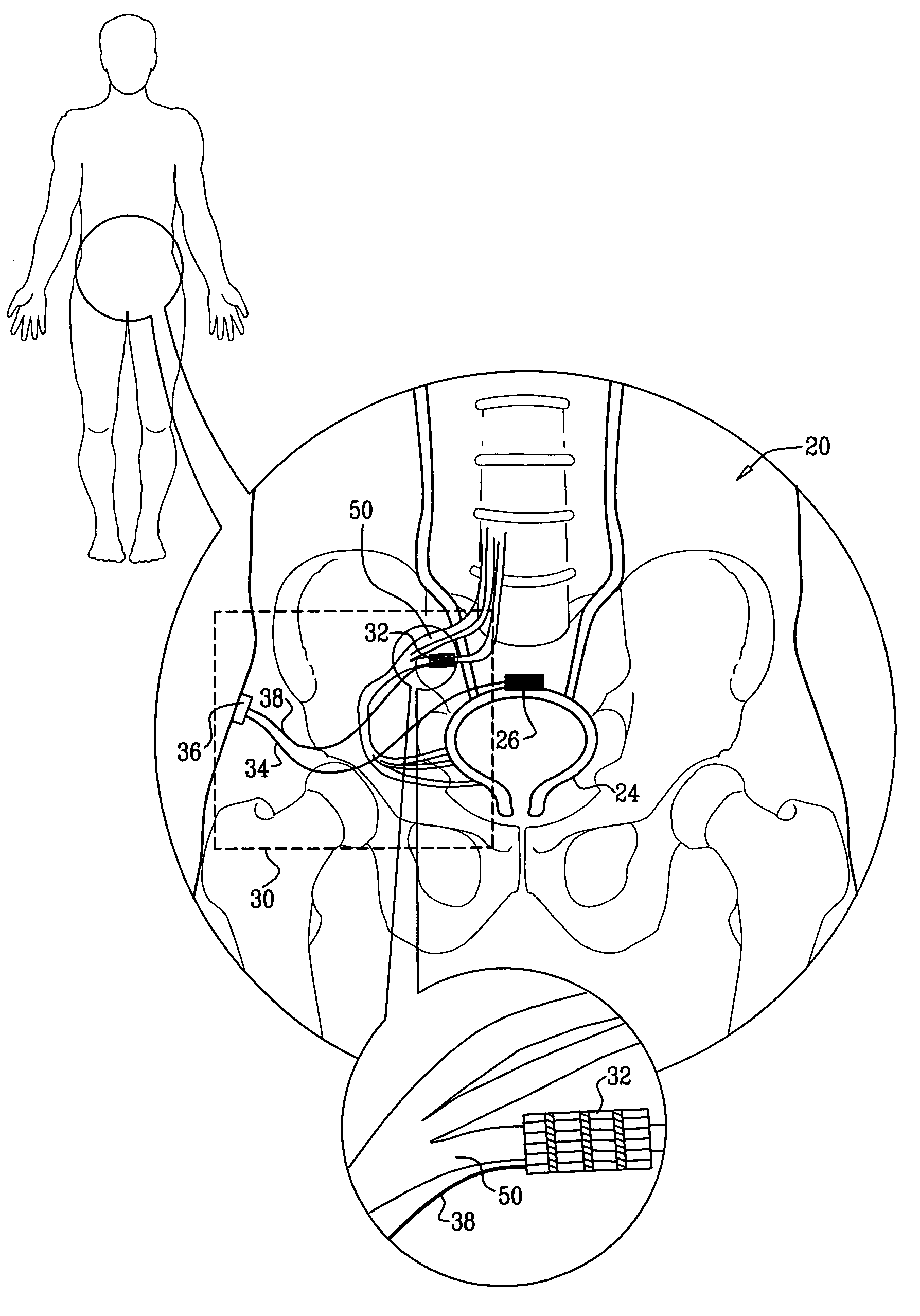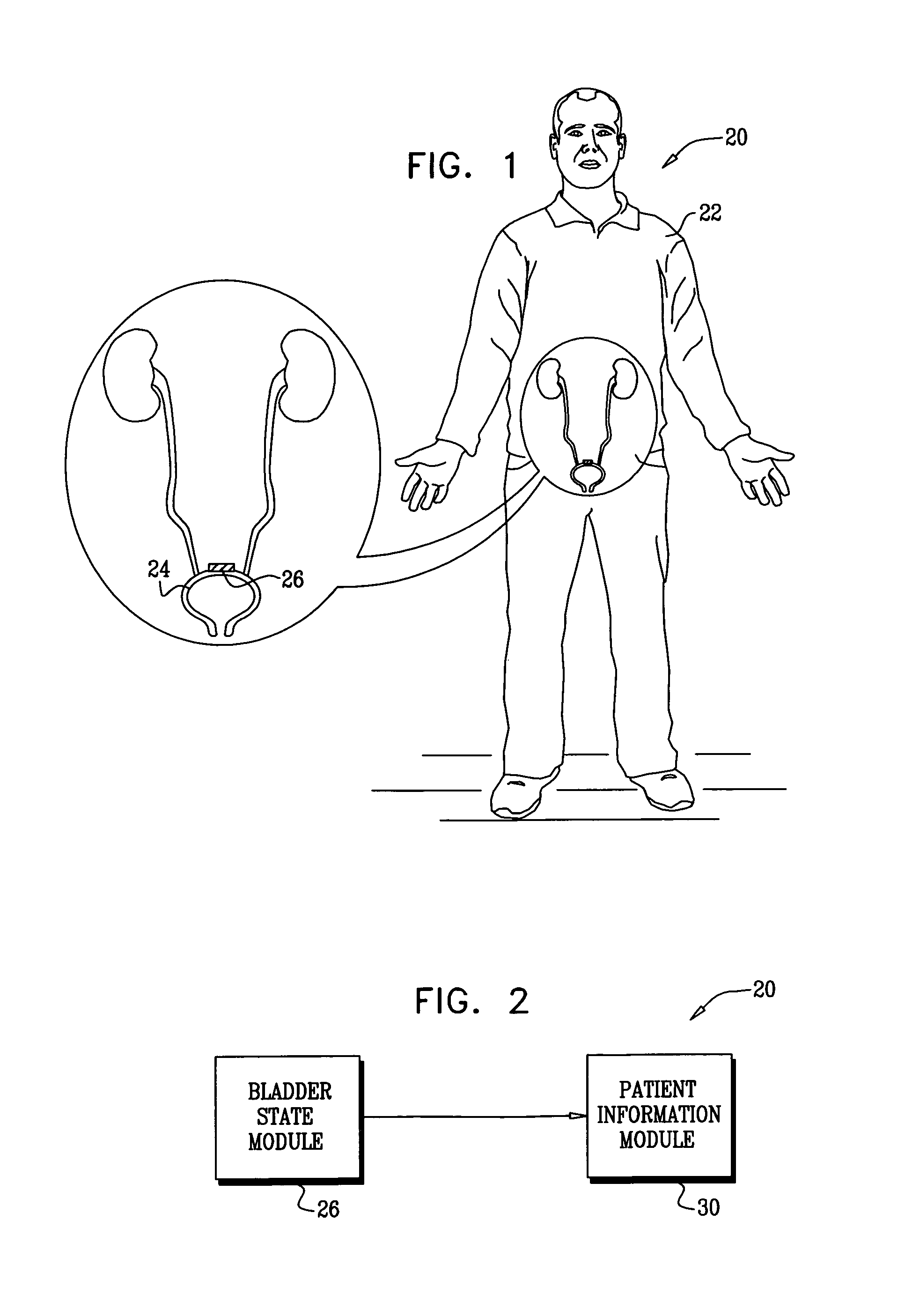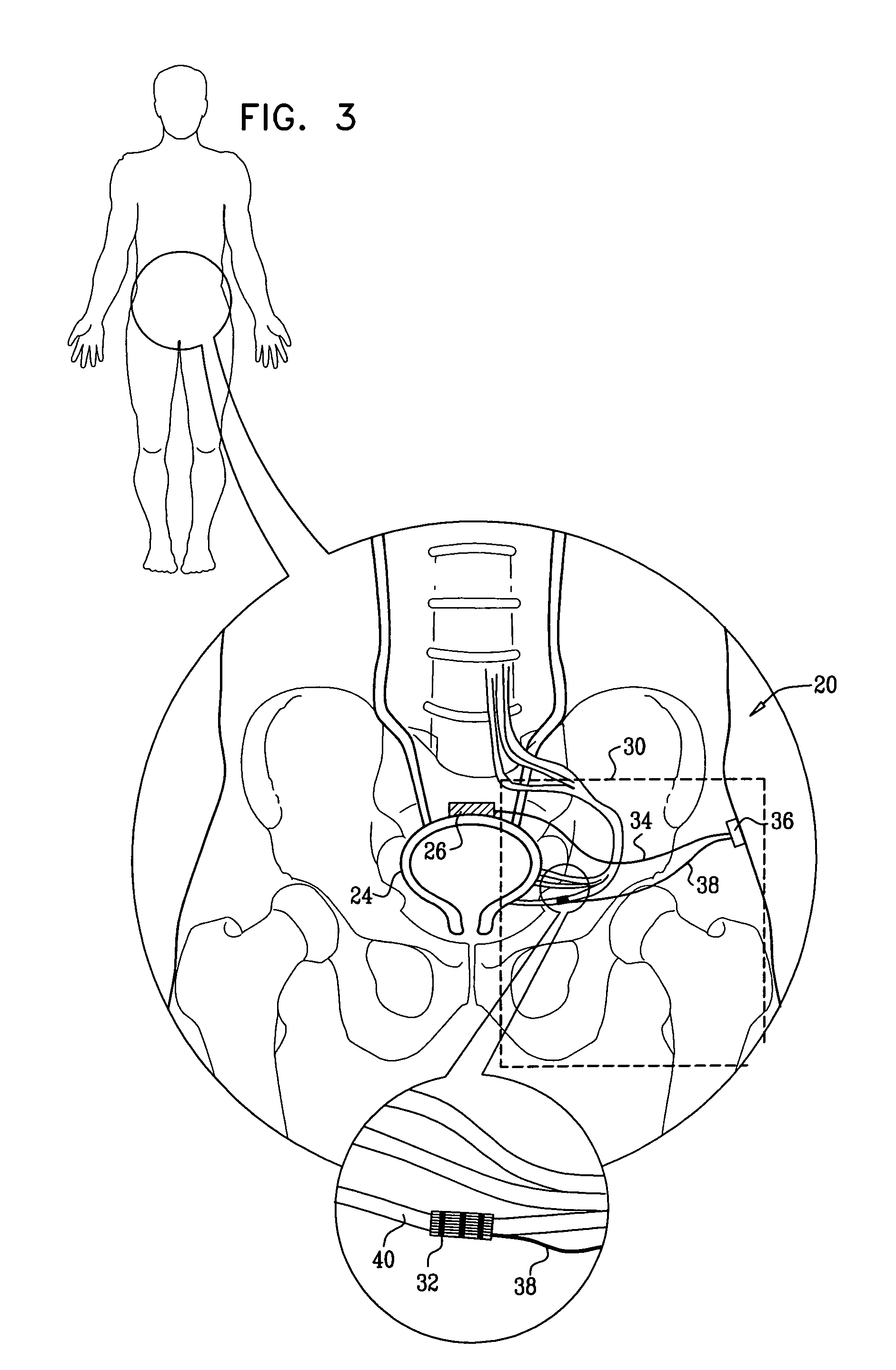Treatment of bladder dysfunction
a technology of bladder and filling level, applied in the field of treatment of bladder dysfunction, can solve the problems of preventing brain signal transmission, affecting the function of bladder, so as to prevent bladder overdistension, increase the filling level, and prevent bladder overdistension.
- Summary
- Abstract
- Description
- Claims
- Application Information
AI Technical Summary
Benefits of technology
Problems solved by technology
Method used
Image
Examples
Embodiment Construction
[0125]Reference is made to FIG. 1, which is a schematic illustration of apparatus 20, comprising a bladder state module 26 configured for chronic implantation in contact with a bladder 24 of a patient 22, in accordance with an embodiment of the present invention.
[0126]Reference is now made to FIG. 2, which is a block diagram of bladder state module 26 in communication with a patient information module 30 of apparatus 20, in accordance with an embodiment of the present invention. Bladder state module 26 is configured to intermittently or generally continuously measure bladder-fill level of bladder 24, identify an indication of a high bladder fill-level, and, in response to the identifying, generate a signal indicative of the state of bladder 24, to be conveyed to patient information module 30. Typically, bladder state module 26 conveys the signal to patient information module 30 when the fill-level of bladder 24 passes a threshold that is at least 100 cc. Alternatively or additionall...
PUM
 Login to View More
Login to View More Abstract
Description
Claims
Application Information
 Login to View More
Login to View More - R&D
- Intellectual Property
- Life Sciences
- Materials
- Tech Scout
- Unparalleled Data Quality
- Higher Quality Content
- 60% Fewer Hallucinations
Browse by: Latest US Patents, China's latest patents, Technical Efficacy Thesaurus, Application Domain, Technology Topic, Popular Technical Reports.
© 2025 PatSnap. All rights reserved.Legal|Privacy policy|Modern Slavery Act Transparency Statement|Sitemap|About US| Contact US: help@patsnap.com



